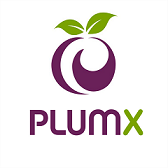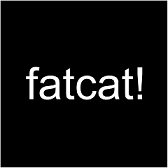Adoption of Pellet Feeds and Demand for Pelleting Machines Among Poultry Farmers and Feed Producers in Eastern and Northern provinces of Rwanda
Abstract
Poultry farming is a growing sector in Rwanda, but productivity remains constrained by high feed costs and limited adoption of modern feeding technologies such as pellet feeds. Pellet feeds have become increasingly popular in poultry production because they improve feed efficiency, reduce wastage, and support faster growth compared to mash feeds. In commercial systems, especially broiler production, adoption is very high. Studies indicate that over 90% of broiler diets worldwide are pelleted. Market data also show pellets make up around 40–45% of the global poultry feed market, with regional variations depending on production scale and infrastructure. This study employed a descriptive cross-sectional survey of 135 poultry farmers from the Northern and Eastern provinces, using structured questionnaires to collect data on sociodemographic characteristics, poultry management practices, and perceptions toward pellet feeds and pelleting machines. Results show that only 38.8% of farmers currently use pellet feeds, with barriers including misconceptions that pellets are for broilers only (32.4%), lack of availability for layers, limited knowledge, and high costs. Awareness that pellets can be used for layers was low (30.2%), yet willingness to adopt was high, with 93.1% expressing interest in increasing use and 98.3% willing to purchase an affordable small pelleting machine. Logistic regression further showed that layer rearers (AOR = 0.093, 95% CI: 0.026–0.334) and those unaware of pellet suitability (AOR = 0.085, 95% CI: 0.033–0.218) were less likely to use them compared to the broiler rearers and those who are aware of pellet suitability, respectively. These findings highlight critical knowledge and perception gaps that limit pellet feed adoption despite strong interest, suggesting that targeted farmer training, awareness campaigns, and improved access to affordable pelleting equipment are essential to enhance productivity and sustainability in Rwanda’s poultry sector
Downloads
References
Bist, R. B., Bist, K., Poudel, S., Subedi, D., Yang, X., Paneru, B., Mani, S., Wang, D., & Chai, L. (2024). Sustainable poultry farming practices: a critical review of current strategies and future prospects. Poultry Science, 103(12), 104295. https://doi.org/10.1016/j.psj.2024.104295
Dhehibi, B., & Jebali, O. (2022). R4D INITIATIVES Profitability of Manufactured Feed Pellets for Small-Scale Crop-Livestock Farmers in Tunisia. October.https://doi.org/10.13140/RG.2.2.31084.95367
FAO. (2013). Poultry Development. In The role of poultry in human nutrition.
Getahun, A., Kechero, Y., Yemane, N., Dessie, T., & Esatu, W. (2025). Nutritional evaluation and potential of locally available alternative feed resources for sustainable poultry production: a case study of smallholder farms in central and Southern Ethiopia. Tropical Animal Health and Production, 57(7), 1–17. https://doi.org/10.1007/s11250-025-04549-7
Hammond, J., Pagella, T., Caulfield, M. E., Fraval, S., Teufel, N., Wichern, J., Kihoro, E., Herrero, M., Rosenstock, T. S., & van Wijk, M. T. (2023). Poverty dynamics and the determining factors among East African smallholder farmers. Agricultural Systems, 206(January), 103611. https://doi.org/10.1016/j.agsy.2023.103611
Lancheros, J. P., Espinosa, C. D., & Stein, H. H. (2020). Effects of particle size reduction, pelleting, and extrusion on the nutritional value of ingredients and diets fed to pigs: A review. Animal Feed Science and Technology, 268(November 2019), 114603. https://doi.org/10.1016/j.anifeedsci.2020.114603
Lwakatare, M., & Mlimbila, J. (2023). Dietary Supplement Use and Associated Factors Among Adults Working in Urban Settings in Tanzania: A Cross-Sectional Study. Health Services Insights, 16. https://doi.org/10.1177/11786329231170752
Muleta, C. (2024). The Major Potential of Non-Conventional Feed Resources in Poultry Nutrition in Ethiopia: A Review. Animal and Veterinary Sciences, 12(2), 68–77. https://doi.org/10.11648/j.avs.20241202.13
Munyaneza, J. P., & Niyonsaba, A. (2021). Review on Challenges and Opportunities of Poultry Production Systems, Genetic Resources, and Improvement in Rwanda. Journal of Animal Breeding and Genomics, 5(4). https://doi.org/10.12972/jabng.20210014
National Institute of Statistics of Rwanda. (2023). Seasonal Agriculture Survey 2023 Annual Report. December.
Thomas, M., & van der Poel, A. F. B. (2020). Fundamental factors in feed manufacturing: Towards a unifying conditioning/pelleting framework. Animal Feed Science and Technology, 268, 114612. https://doi.org/10.1016/j.anifeedsci.2020.114612
Touch, V., Tan, D. K. Y., Cook, B. R., Liu, D. L., Cross, R., Tran, T. A., Utomo, A., Yous, S., Grunbuhel, C., & Cowie, A. (2024). Smallholder farmers’ challenges and opportunities: Implications for agricultural production, environment and food security. Journal of Environmental Management, 370(May), 122536. https://doi.org/10.1016/j.jenvman.2024.122536
Vukmirović, Čolović, R., Rakita, S., Brlek, T., Đuragić, O., & Solà-Oriol, D. (2017). Importance of feed structure (particle size) and feed form (mash vs. pellets) in pig nutrition – A review. Animal Feed Science and Technology, 233, 133– 144. https://doi.org/10.1016/j.anifeedsci.2017.06.016
Wilson, W. C., Slingerland, M., Baijukya, F. P., Giller, K. E., & Oosting, S. (2023). Feed gap analysis of dual-purpose chicken production in Tanzania: feed quantity and quality limited production. Poultry Science, 102(5), 102574. https://doi.org/10.1016/j.psj.2023.102574
Zampiga, M., Calini, F., & Sirri, F. (2021). Importance of feed efficiency for sustainable intensification of chicken meat production: implications and role for amino acids, feed enzymes and organic trace minerals. World’s Poultry Science Journal, 77(3), 639–659. https://doi.org/10.1080/00439339.2021.1959277
Copyright (c) 2025 Zachee Ntakirutimana, Eric Sibomana, Eugene Twizeyimana, Aphrodis Tuyishimire

This work is licensed under a Creative Commons Attribution 4.0 International License.




























